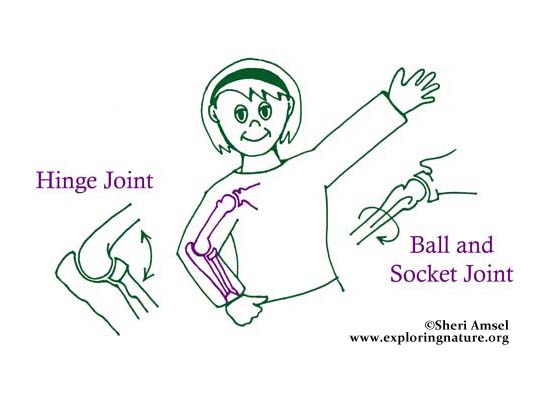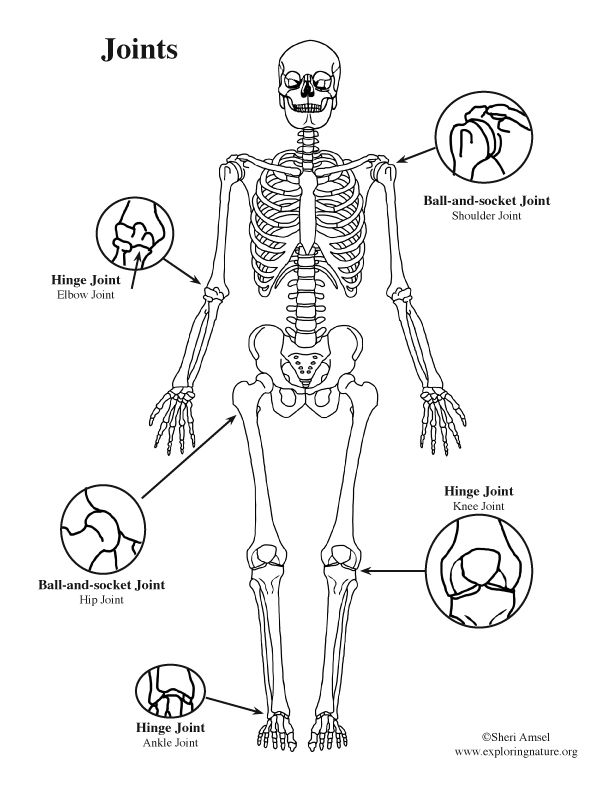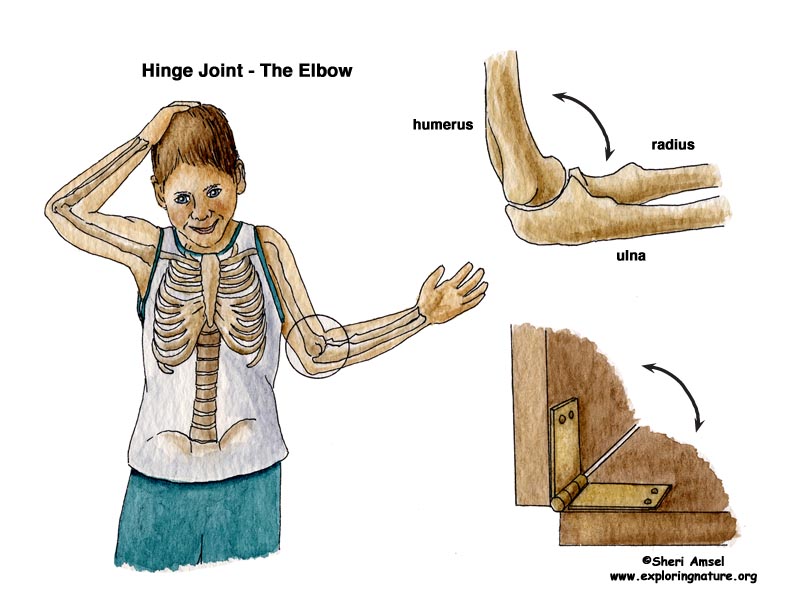


Where two bones come together there is always a joint. There are more than 230 joints in your body. We think of joints as a place where a lot of bending and moving takes place. This is true, but joints are also important for keeping our bones tied together. If you bent your knee and your bones flew apart that wouldn’t help you get anywhere. In fact, some joints are bound so tightly that they don’t allow any movement at all. An example of this is the joint between your teeth and your jaw. Other than when your baby teeth are replaced by adult teeth, your teeth should never move in their joint. It is meant to keep them in place and does – unless you accidentally knock them out (try not to do this!).
Most joints do have a lot of movement, though not all of them move the same way. The two kinds of joints we will look at here are the hinge joints and the ball and socket joints.
Hinge joints only move back and forth like a hinge. Your elbows, knees and knuckles are hinge joints. They have limited motion, but they are very stable joints. This makes them good for carrying weight. The next time you lift a heavy rock, notice how powerful and stable your elbows are when only moving in one direction as they do. Your knees are the same way, except they are carrying around your whole body weight on them. So if you fall or are knocked over, your knees are under a lot more pressure. They can be hurt more easily. Luckily strong muscles and ligaments protect your knees from every day wear and tear.
Ball and socket joints have a full range of motion. This means they allow you to rotate the bones in that joint in a big circle. Your shoulders and hips are ball and socket joints. These joints have the most motion of any other joints in the body. This is very useful, allowing us to lift things over our heads or hang from our hands. It would be very hard to climb trees or ladders without a ball and socket shoulder joint. Unfortunately, because these joints have so much motion, they are not quite as stable as hinge joints. It is not unusual for people, especially athletes who play rough sports, to pull their shoulder right out of joint. This is called a shoulder dislocation and really hurts. In a shoulder dislocation, the top of the arm bone, the humerus, actually gets pulled right out of the shoulder joint. When this happens, that arm becomes useless until a doctor can put the humerus back into place.
Hip joints have less motion because they are held tightly in place by ligaments and tendons. But they are more stable than shoulder joints. This is a good thing or you could never climb mountains, ski or dance.


